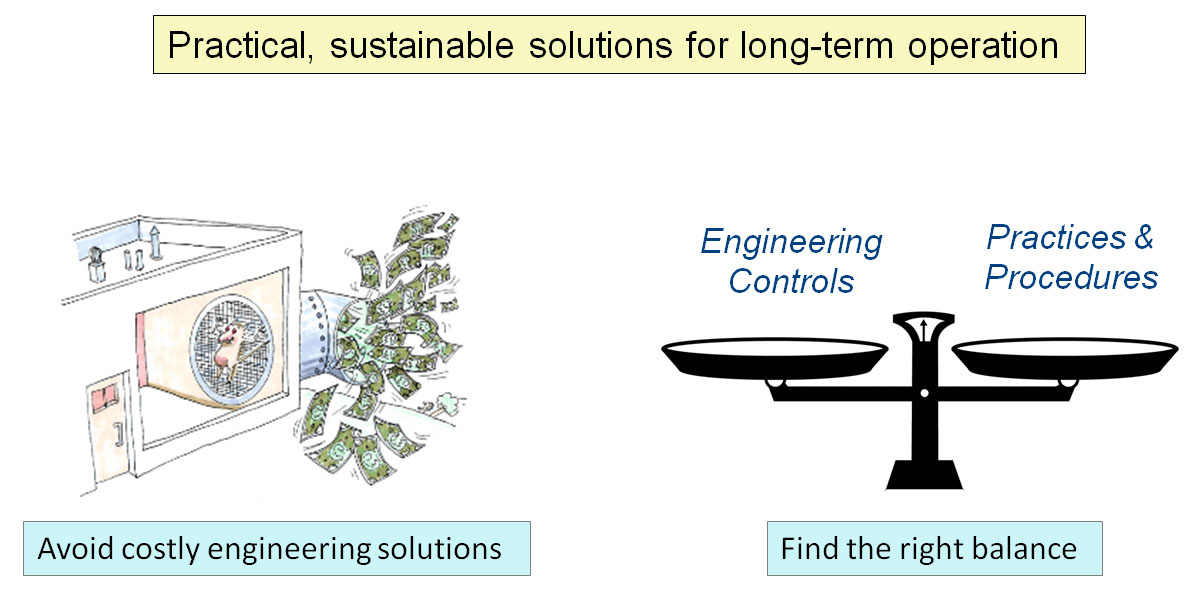Biocontainment Facilities
Sustainable Laboratory Design
Laboratories are an integral component of global health security and play a major role in the safe and secure handling of biological materials. Building laboratory infrastructure that is highly dependent on engineering controls and technology presents a challenge in many countries where construction and maintenance costs are prohibitive. Rather than taking a high technology approach, the IFBA adopts a risk-based approach to designing “built-to-purpose” laboratory equipment and infrastructure that is:
- relevant to local circumstances
- tailored to the actual risks of an individual laboratory
- economically feasible and cost-effective to maintain
Watch the IFBA’s video on Sustainable Laboratories
Click here to access the Sustainable Laboratories “Prior Assessment Tool” published by Chatham House. The tool aims to provide a framework for a structured conversation surrounding the issues of designing and building sustainable laboratories. By using this tool early on in the planning process (i.e. prior to embarking on a detailed planning phase), countries can ensure that any ensuing laboratory demonstrably supports the national strategy, addresses relevant risks and benefits, and flourishes as a sustainable laboratory over the long term.
Risk-Based Approached to Biocontainment Facilities
In 2010, the IFBA’s Biocontainment Engineering Working Group (BEWG) was created to serve as a “think-tank” to identify practical and sustainable solutions for biocontainment laboratories around the world. This network of biocontainment engineers and private industry partners are working together on sustainable laboratory design approaches to reduce initial capital and on-going operational costs. Laboratories in lower resource countries often struggle to implement containment solutions which have been designed for use in other parts of the world where different working conditions prevail. Compounding the problem is a lack of well-trained biocontainment engineers that can adequately maintain and operate laboratories and critical containment equipment (e.g. biological safety cabinets) over the longer term. Effective supplier networks, maintenance provision and other basic measures are often unavailable to those most in need.
To meet these challenges, the IFBA promotes risk-based approaches to laboratory and equipment design that are cost-effective, locally driven, and can be practically implemented over the long term. The vision for risk-based approaches is not to lay out the requirements for a BSL2 or BSL3 laboratory, but rather to describe “how” these facilities should be planned and designed based on a local biocontainment risk assessment. The resulting facilities would be built-to-purpose, utilizing a more nuanced set of requirements, and would allow for investment in infrastructure, equipment and precautions suited to the type of procedures performed. It is important to note that building sustainable laboratories also requires a strong focus on procedural and human factors, including trained and competent engineering and maintenance staff.

